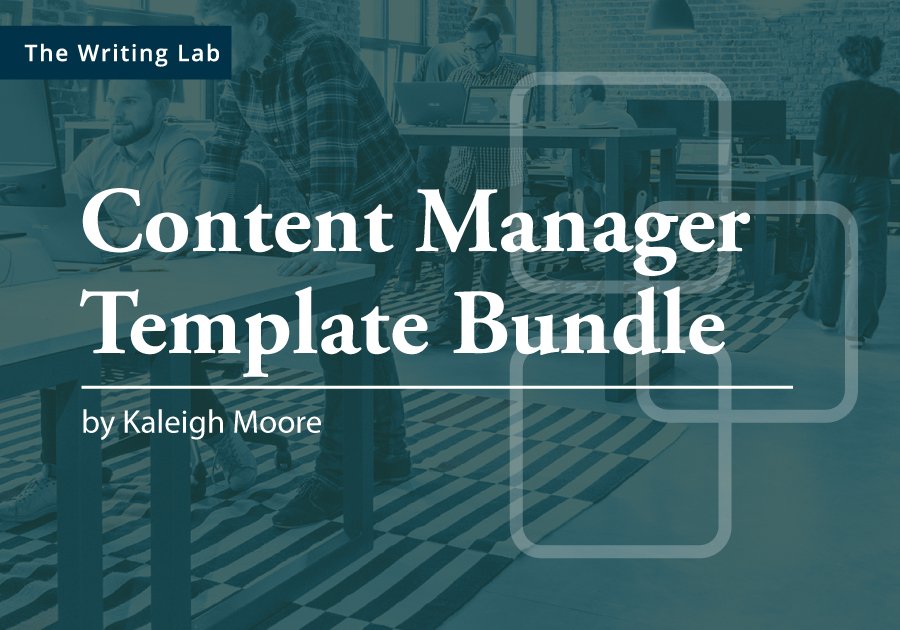In this new era of AI-powered writing tools, I’ve been thinking a lot lately about quality when it comes to writing.
Are we generally satisfied with “done, and good enough”?
Or are there still publications and organizations out there dedicated to producing top-notch, highly researched, funny, culturally relevant writing?
The latter is a LOT of work. It’s expensive. It takes time. It’s a team effort, with various experts (or one person with a lot of varied expertise) weighing in on different aspects of the piece.
So I understand why so many organizations shy away from it.
But over the course of my (almost) decade of full-time freelance writing, I’ve written for a handful of places that maintain extremely high editorial expectations. And every time, those expectations have pushed me (and other contributors) to rise to the high bar they set.
These are the pieces I’m most proud of. They rank well in search results. They’re still useful YEARS after publication. They make readers laugh while they learn.
A few examples so we’re on the same page about what this actually looks like:
So what do they do that’s so different from the status quo?
Well, let me break it down for you.
Maybe you’ll find a thing or two you can add to your own editorial process. I can 100% guarantee that your content will be better (and perform better!) because of it.
The Screening Process
Quality control is the name of the game, and screening is the first quality control filter.
Not any Joe Schmoe who wants to write for a publication gets to; he or she has to make it through a filtering process to ensure there’s a good fit.
The process usually goes like this:
A writer fills out a form indicating he/she would like to contribute a piece, sharing basic info on their experience level, expertise with the subject matter, and a few writing samples.
Along with this info, they pitch a potential topic. The pitch helps the editors screen writers based on a few key indicators:
Is the pitch relevant? If a writer has done his/her homework, the subject matter will be relevant to the publication’s target audience.
Is it specific? Specificity is critical. If the topic is too broad, the writer won’t be able to drill down into the details. Sites that value high-quality articles go deep, not wide (as it makes them more valuable for the reader.)
Has it been covered before? Again, a good writer will check and ensure the idea they’re proposing hasn’t been covered and is a fresh topic for the publication.
Is it interesting? A good article pitch grabs the readers’ attention. While an idea might tick the boxes for specificity and relevance, if it’s not very interesting, no one will read it. The subject matter should add something new and compelling to an existing conversation.
The screening process helps the editorial team gauge a writer’s skill level and attention to detail. It’s a test for the writer, too: He or she has a chance to show they understand what the publication wants and needs topic-wise.
Once a writer makes it through the screening process, the topic is often slightly tweaked and assigned. The next phase is onboarding.
The guidelines
High editorial expectations are laid out before a single word is written.
In these instances, there’s a formal onboarding process where the writer is expected to get familiar with the organization and how things work when working on and submitting a piece.
During this process, the writer dives into a few key resources.
(Pssst! If you're someone hiring writers, I have templates for these assets you can purchase that speed this process up and keep you from starting from scratch.)
The onboarding guide. This is usually either a slide show, video, or written document that explains the publication’s high-level expectations. It includes information about the organization, its audience personas, expected minimums (word count, read time, or some other scope boundary), objectives for content, and successful article examples to study.
It also explains any material that isn’t up to par will not be published. Setting this tone right off the bat makes a writer sit up a little straighter; no one wants to spend hours working on a piece that never sees the light of day.
A writing brief. Rather than being highly prescriptive on what to write/include, publications with high expectations use writing briefs more as a reference point for key resources like their style guide, relevant case studies, etc. These are not documents that tell the writer what to cover and examples to include. Instead, it’s a resource hub the writer can refer back to as he or she works.
Workflow info. This piece defines draft deadlines, expected turnaround times, and information on the editing process as the piece progresses (such as how many versions the average writer produces from start to finish.) This sets the writer up with clear expectations around what will be an intensive and iterative writing process.
After a day or two, the writer and point person (usually the editor) schedule a call to get acquainted, review the timetable, and answer any remaining questions.
From there, the outlining process begins.
The Outline
The outlining process, when writing long-form/evergreen content, is a heavy lift.
Here, the writer is expected to build an extremely thorough outline for the piece (to the point of it essentially being the first draft in abbreviated/bulleted form.)
This means including all research, data, quotes, examples, and expertise that will appear in V1.
Once the outline is complete, the editor will review and leave detailed notes within the document. There’s a lot of back-and-forth during this phase.
Sections are re-arranged, cut, and/or additional sections are recommended
Requests made for greater relevance within examples given
Greater depth is encouraged; points will have comments like "say how" and "explain this"
The outline typically goes through one or two rounds of review and tweaks before the writer gets approval from the editor to proceed to the full first draft.
Building the first draft is really just a matter of fleshing out the outline and following the requested article format, so let’s fast-forward to the next phase.
Editing
Once a draft is done, the editing process is INTENSE.
Sometimes, a single editor handles a variety of editorial reviews; other times the draft gets reviewed by several people with different types of expertise.
This phase often takes weeks, sometimes months, depending on the article's length. It's not a quick turnaround process. Editors are diligent and rigorous.
NOTE: Sometimes, if an editor gets the first draft and it’s wildly sub-par, the editor will shelve the draft, pay the writer for work completed, and part ways. Despite the screening process and collaborative outline work, this can happen if the delivered draft requires too many edits to get it where it needs to be. This is an editor’s judgment call to make, and it sucks for both parties. It’s happened to me before, and it sent me into a panic about my writing not being “good enough.” But it also pushed me to keep working at it, and in that instance, I was able to get the piece published elsewhere once I reworked it.
However, if things proceed normally, there are typically three main types of edits drafts go through (in this order):
1. Content and context. This is the most intensive edit, wherein an editor does a review of the entire draft to make sure it is as thorough and complete as possible. The purpose of this type of review is to poke holes in the content and to make sure it has all the important context it needs to be nuanced and balanced.
This editor works to ensure a reader’s potential questions are answered, to eliminate any instances of opinion or bias, and to ensure all points are backed with reliable and current research. It’s not uncommon for a first draft to be sent back to the writer with many suggested edits, comments, and markup (which can feel overwhelming for the writer at first glance.)
This is an excellent learning experience for the writer, wherein he or she can observe and note the editor’s recommendations for building a stronger piece.
2. Style and format. Once the basic content of the piece is sound, the next edit focuses on consistencies across style and format. This means reviewing the writing voice and tone while also tweaking headings, pull quotes, images, and examples, so they are consistent with the publication’s standard formatting. This is also where the fact-checking and basic grammar review happens.
3. Search engine optimization (SEO.) In this final phase of the review, a team member with SEO expertise will review and tweak the draft to be sure it’s optimized for relevant keyword phrases, thus helping boost the likelihood it will rank well in organic search results.
Distribution
Once a draft has made it through the editing gamut, the final stage is planning its publication date and distribution plan. After all, what good is all this effort if just a few people read it?
This often includes a few different waves of promotion.
Phase one: Date content goes live
This phase is about announcing the piece (and all the hard work that went into it) to the world.
Notifying any sources that were cited or quoted within the piece when it goes live and providing a link to the said piece (in hopes of some added organic distribution via those individuals)
Writing copy for the organization’s various social media platforms
Developing teaser content, such as short-form videos, Twitter threads, or visual snippets
Phase two: 1-3 weeks post-publish
This phase is focused on getting a little extra mileage out of the material once the excitement about the initial release has died down.
Resurfacing the content across owned social media channels, sometimes with advertising dollars behind them
More teaser content, pulling different quotes and snippets from the piece
Community seeding (promoting the material on Quora, Reddit, and other relevant forums where the target audience spends time)
Phase three: 3-6 months post-publish
If the piece performs well and drives noteworthy traffic to the site, it’s a good candidate for revisiting. Updating and repurposing help ensure the article continues to be a useful traffic driver to the site.
Content repurposing (taking the original content and repackaging it into new formats like YouTube videos, infographics, audio, etc.)
Updating content to include new data released since the original publish date, fresh examples, etc.
Whew, that was a lot!
Blogs and publications with extremely high editorial standards are NO JOKE. The process isn’t for the average writer who isn’t up for a challenge.
However, if you’re a writer who wants to push the limits of your skillset, opting into this process has a few major benefits:
You’ll get to learn from a top-notch editor who pushes you to do your very best work.
You’ll get an end product that you’re proud to share and spotlight within your portfolio (and usually a great byline you can tout as a proof point, too.)
You’ll have gained some major patience and persistence when it comes to your writing practice (‘cause handling all those edits is…a lot.)
All in all, it’s a great challenge. It's a little stressful, a little intense, but if you make it out to the other side, you'll have a whole new worldview when it comes to writing.




